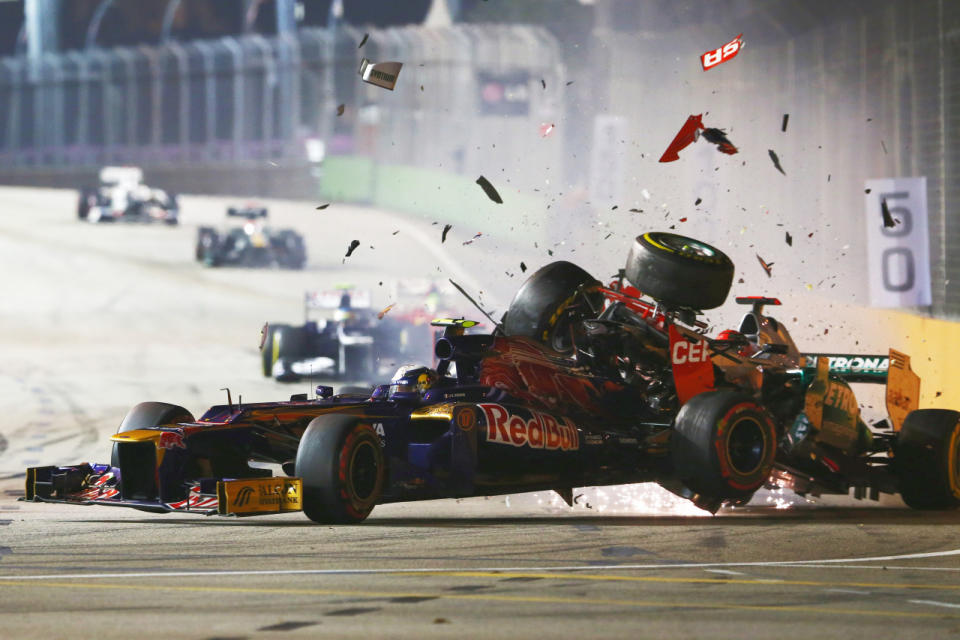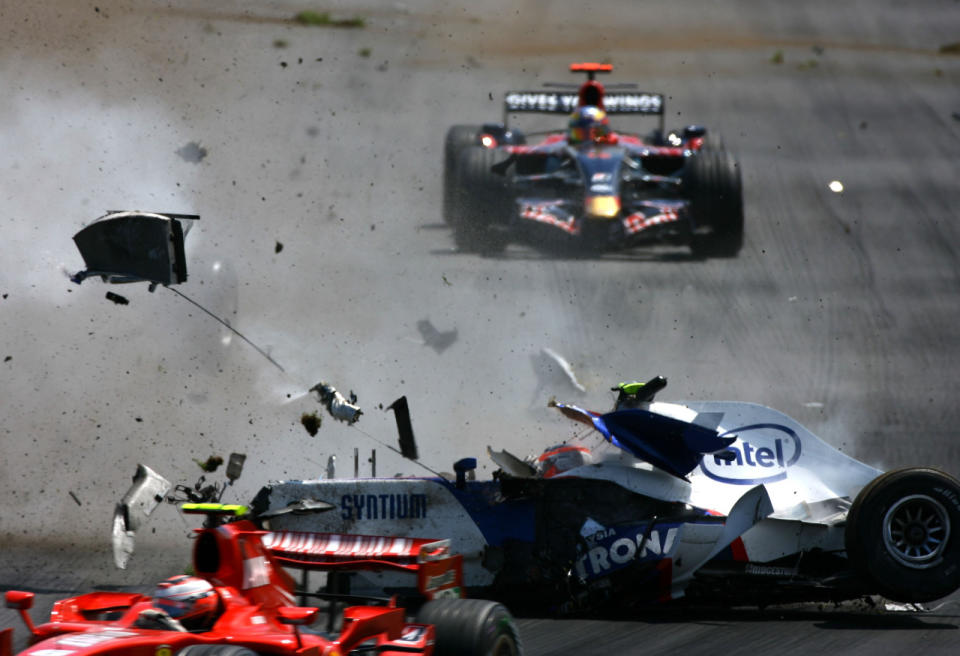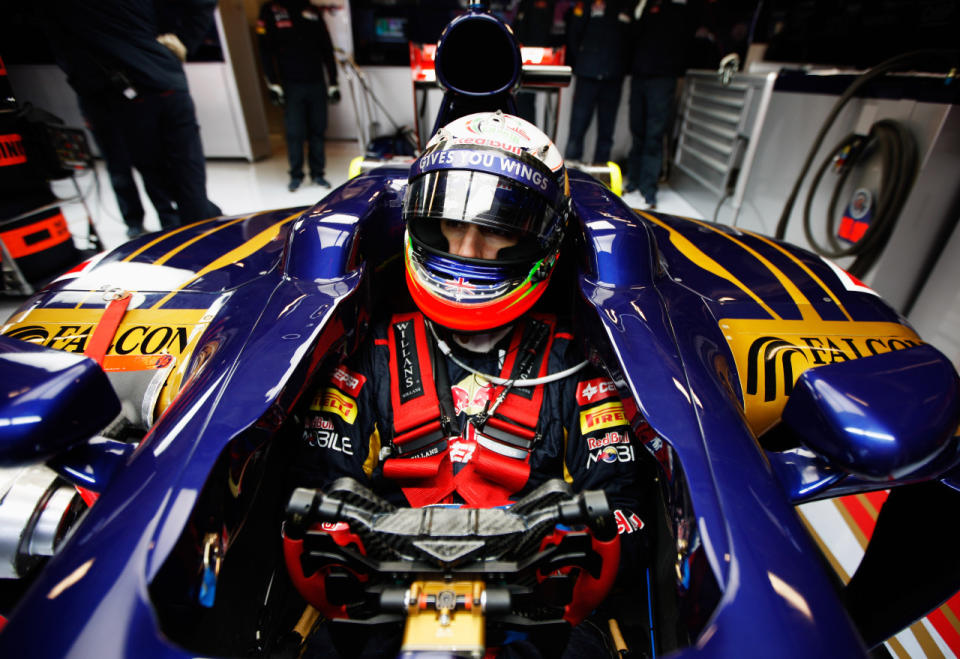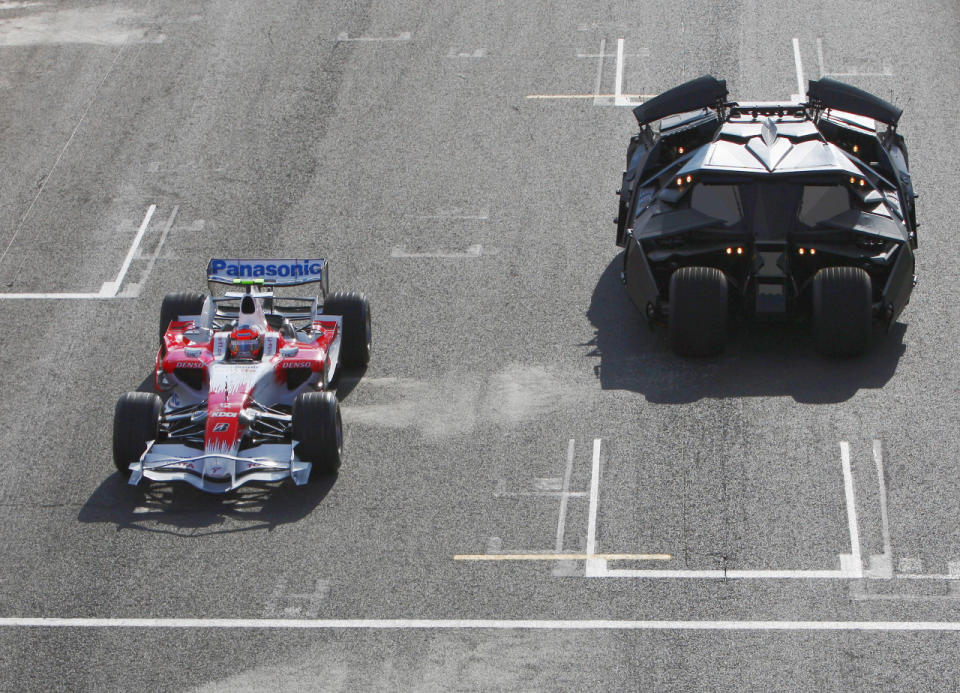Why do F1 cars break up so dramatically in a crash?

Formula 1 is, on the face of it, a dangerous sport. Cars laden with fuel, driven inches apart at up to 200mph, by drivers who all want to win.
Even a small collision will see pieces flying from the cars and, in major incidents, it can look as if a car is exploding, such is the volume of debris scattered around.
And yet injuries and deaths are rare – Jules Bianchi died of injuries sustained in the 2014 Japanese Grand Prix but he was the first F1 fatality since Ayrton Senna’s tragic accident at Imola in 1994.
So, in a sport where safety is so important, why do teams build cars that shatter in a crash?
Big bang theory

At the 2007 Canadian Grand Prix, Polish driver Robert Kubica (pictured) survived one of the most violent F1 crashes of recent times.
His BMW Sauber clipped a Toyota and left the track, skidding over a bump that launched the car into the air and almost headfirst into a concrete barrier, before it barrelled back over the track into another barrier.
When it finally came to rest, the Sauber was barely recognisable. Kubica had hit the barrier at 186mph, and experienced a peak deceleration of 75g – for an instant, Kubica effectively weighed five tonnes.
But every piece of debris that flew off his car helped Kubica, by dissipating energy. Kinetic energy is measured in Joules, and Kubica’s car possessed more than 2.5million Joules (about the same energy as 20 family hatchbacks driving towards you at 30mph).
Now, the energy in a crashing car is far from being the only factor in how survivable an accident is, but it’s important enough for our family hatchbacks to have energy-absorbing crumple zones built-in.
It’s the same in F1 – the cockpit is surrounded by structures which are designed to crumple and absorb energy in a crash.
Most of the bits that don’t crumple can best protect the driver by breaking off and flying away, stripping energy out of the crashing vehicle. F1 engineers could design cars that don’t fall to bits in a crash – but they’d be heavier and less safe, and the crumple zones would have more energy to deal with as well.
Of course, there are some parts that are designed to stay intact, whatever happens…
In the eye of the storm

An F1 car is built around a monocoque and this is the key to driver safety.
The monocoque is an incredibly strong tub – it’s the main part of the chassis, and the engine and front suspension are mounted on it.
It also includes the cockpit and the driver’s survival cell, which is built to survive crash tests without deforming in any way.
The secret to this great strength lies in the two main materials used. Up to 60 layers of carbon fibre feature – there’s a lightweight honeycomb structure, covered with high-density carbon fibre weave.
And the survival cell is protected by 6mm of carbon and a material called Zylon, which was used in bullet-proof vests. Zylon tethers are used to stop wheels detaching from a car and bouncing into bystanders, and the material was mandated for use in helmets after Felippe Massa suffered a serious head injury in 2009.
Why the Batmobile solution wouldn’t work

It’s fair to ask why the whole F1 car isn’t surrounded by a huge survival cell with four wheels attached, Batmobile-style.
Aside from issues of cost, there is a genuine disadvantage in having a race car that doesn’t deform in a crash.
To illustrate the problem, simply take one egg, secure it inside a strong, non-deformable container and drop the whole thing on a hard floor.
From low heights, the egg will survive but, as you drop it from greater heights, your chances of creating an eggy mess multiply, because of the increasing stresses being placed on the egg by near-instantaneous deceleration.
From the 1980s onwards, some racing series built stiffer and stiffer chassis that improved a car’s performance but had less and less give in accidents, and lives were lost as a result.
Perhaps the best known such accident claimed the life of Dale Earnhardt Snr in the 2001 Daytona 500.
He crashed on the final lap of the race but his car did not look to be particularly badly damaged.
Indeed, the car had not crumpled much but, as a direct result of that, the deceleration had whipped Earnhardt’s head forward at speed, causing a fatal basilar skull fracture. This fracture, at the base of the skull, is generally a rare occurrence – but has claimed a significant number of lives in motorsport.
In F1, this sort of injury killed Roland Ratzenberger, who perished the same weekend as Ayrton Senna.
A car that crumples even a little in a crash reduces the forces acting on a driver substantially – imagine the difference between punching a brick and an empty cola can.
As well as forcing engineers to reconsider the merits of super-stiff cars, such accidents also led to the introduction of head and neck supports such as the HANS device – which is credited with helping save Kubica at that dramatic Canadian Grand Prix.
Lessons do get learned in motorsport… eventually.

 Yahoo Sport
Yahoo Sport 





































